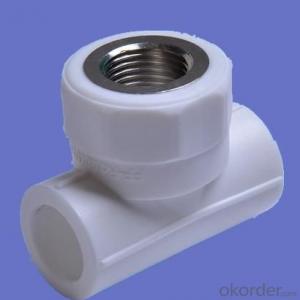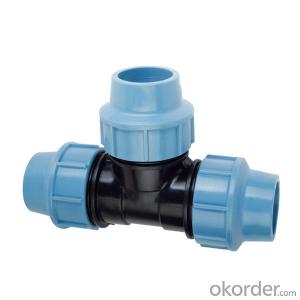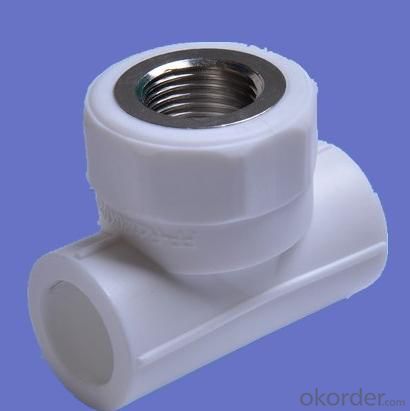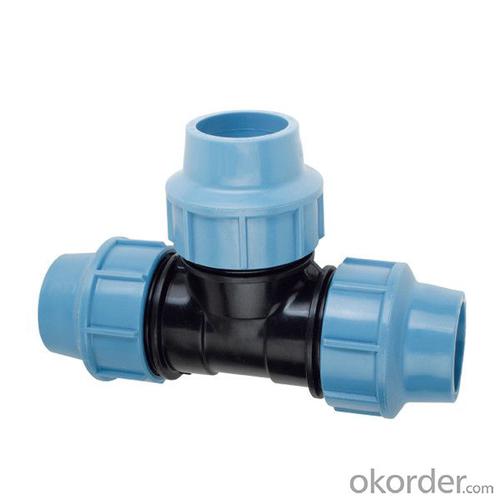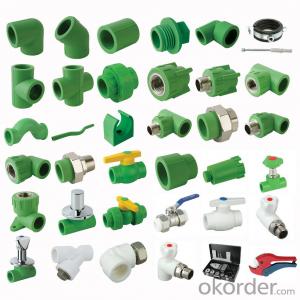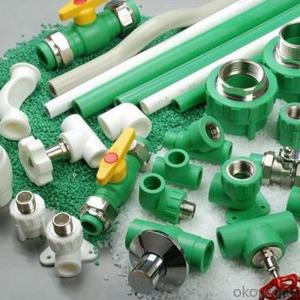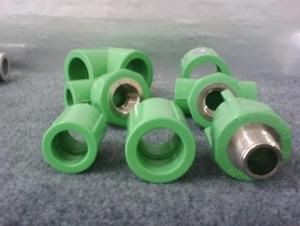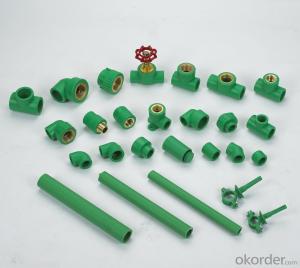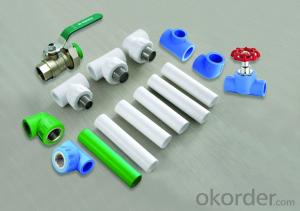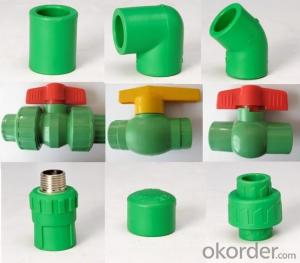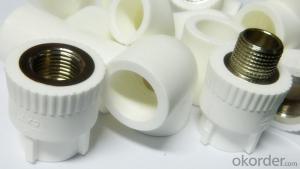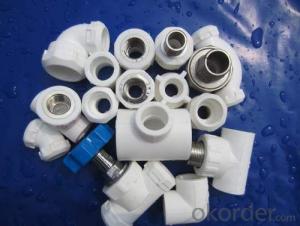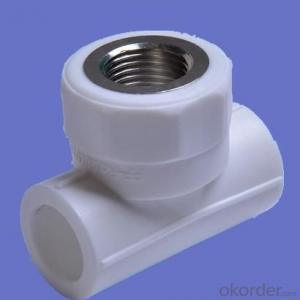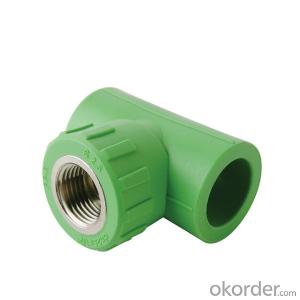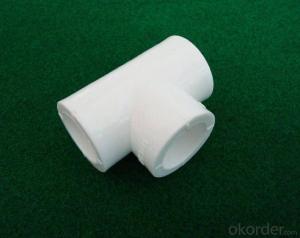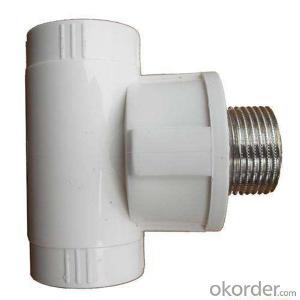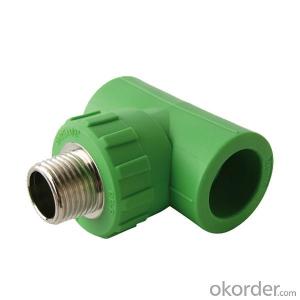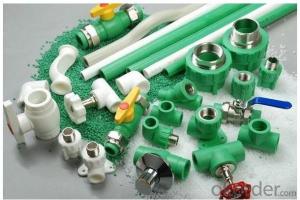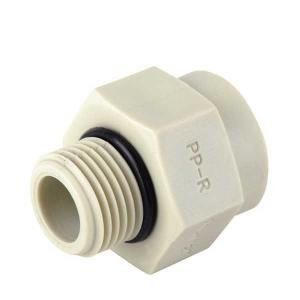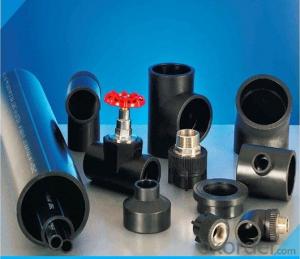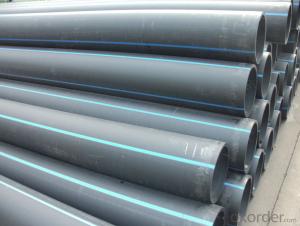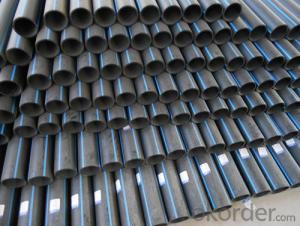Steel to Plastic Pipe Fitting - PPR Equal Tee and Reducing Tee Made in China
- Loading Port:
- Shanghai
- Payment Terms:
- TT OR LC
- Min Order Qty:
- 100 m.t
- Supply Capability:
- 10000 m.t/month
OKorder Service Pledge
OKorder Financial Service
You Might Also Like
Brief Introduction:
1.It is used in industrial fields, agriculture and garden irrigation
2. Beauty appearance.
3.Thermal insulation and energy saving.
4. Easy installation
5.excellent heat resistance and pressure resistance
6. affordable price
Our Advantages:
1) Healthy, bacteriological neutral, conforming to drinking water standards
2) Resistant to high temperatures, good impact strength
3) Convenient and reliable installation, low construction expenses
4) Excellent heat-insulation property from minimum thermal conductivity
5) Lightweight, convenient to transport and handle, good for labor-saving
6) Smooth inner walls reduce pressure loss and increase flow speed
7) Sound insulation (reduced by 40% compared to galvanized steel pipes)
8) Light colors and excellent design ensure suitability for both exposed and hidden installation
9) Recyclable, environment-friendly, accords with GBM standards
Specifications
Standard: DIN8077/8078
Material: R200P from Korea
Size: DN20-63
Color: Green, White, Grey, Blue
Packaging & Delivery
Packaging Details: PE bag + carton
Delivery Detail: 15 Days
Product name | Size | Weight | Pack |
Equal tee | (Gram/m) | (m/pack) | |
T16 | 12.5 | 1300 | |
T20 | 19.4 | 800 | |
T25 | 30.5 | 450 | |
T32 | 48.2 | 260 | |
T40 | 90.8 | 150 | |
T50 | 142.5 | 106 | |
T63 | 275.3 | 54 | |
T75 | 515.0 | 30 | |
T90 | 712.0 | 18 | |
T110 | 1082.0 | 12 | |
T125 | 1544.0 | 8 | |
T160 | 2531.0 | 4 |
Product Applications:
Distribution for cool and hot water
Duct for drinkable water system
Pipes for kinds of high-temperature and low-temperature heating system
Pipes for heating and coolling settings in solar energy system
Connecting pipe for air conditioners
FAQ
Q: What you offer?
A: Any kinds of goods you need, just send us the request, we will reply you back with the details very soon.
Q: Product quality and delivery time?
A: Normally 7-15 days after the order confirmed, we will collect the goods and inspect each of the items and send you the inspection photos for you to confirm.
Q: What's the regular shipping port?
A: Ningbo, Shanghai.
Q: What's your payment?
A: T/T or L/C at sight
- Q: Can plastic pipe fittings be used for geosynthetic clay liner systems?
- No, plastic pipe fittings cannot be used for geosynthetic clay liner systems. Geosynthetic clay liners require specialized fittings designed specifically for their installation to ensure proper functionality and performance.
- Q: Are plastic pipe fittings suitable for hot water applications?
- Yes, plastic pipe fittings are suitable for hot water applications. They are commonly made from materials like PVC or CPVC, which have high heat resistance and can withstand hot water temperatures. These fittings are durable, corrosion-resistant, and cost-effective, making them a popular choice for various hot water systems.
- Q: Are plastic pipe fittings suitable for portable water supply in remote areas?
- Yes, plastic pipe fittings are suitable for portable water supply in remote areas. Plastic pipe fittings are lightweight, durable, and resistant to corrosion, making them ideal for use in remote areas where transportation and maintenance can be challenging. Additionally, plastic pipe fittings are cost-effective and easy to install, making them a practical choice for portable water supply systems in remote locations.
- Q: Can plastic pipe fittings be used in fountain systems?
- Yes, plastic pipe fittings can be used in fountain systems. Plastic fittings are commonly used in fountain systems due to their durability, resistance to corrosion, and ease of installation. They are also cost-effective compared to other materials like metal. Plastic pipe fittings can effectively handle the water flow and pressure requirements of fountain systems, making them a suitable choice for such applications.
- Q: Are plastic pipe fittings resistant to clogging and scaling?
- Yes, plastic pipe fittings are generally resistant to clogging and scaling. The smooth inner surface of plastic pipes minimizes the accumulation of debris and sediment that can lead to clogs. Additionally, plastic materials are less prone to scaling caused by mineral deposits compared to metal pipe fittings.
- Q: What materials are commonly used for plastic pipe fittings?
- Commonly used materials for plastic pipe fittings include PVC (polyvinyl chloride), CPVC (chlorinated polyvinyl chloride), PEX (cross-linked polyethylene), and ABS (acrylonitrile butadiene styrene).
- Q: Are plastic pipe fittings suitable for rainwater harvesting systems?
- Yes, plastic pipe fittings are suitable for rainwater harvesting systems. They are commonly used due to their durability, affordability, and resistance to corrosion. Additionally, plastic fittings are easy to install and maintain, making them a practical choice for collecting and distributing rainwater.
- Q: Method for using steel wire mesh skeleton plastic composite pipe
- After welding, make sure that it is cooled for more than 120 minutes before water pressure test.
- Q: Can plastic pipe fittings be used in industrial settings?
- Yes, plastic pipe fittings can be used in industrial settings. Plastic fittings are often chosen for their corrosion resistance, lightweight nature, and ease of installation. They can be suitable for a wide range of industrial applications, including water and wastewater treatment, chemical processing, and manufacturing processes. However, the specific requirements of the industrial setting, such as pressure, temperature, and chemical compatibility, should be considered when selecting the appropriate plastic fittings to ensure their suitability for the specific application.
- Q: How do you prevent leaks in plastic pipe fittings?
- To prevent leaks in plastic pipe fittings, it is essential to follow a few key steps. Firstly, ensure that the pipe ends are clean and free from any dirt or debris. Next, use proper tools to tighten the fittings securely, avoiding over-tightening which may damage the threads. Applying a suitable sealant or thread tape to the male threads can also help create a watertight seal. Finally, regularly inspect the fittings for any signs of wear or damage, and promptly replace any faulty components to prevent leaks from occurring.
Send your message to us
Steel to Plastic Pipe Fitting - PPR Equal Tee and Reducing Tee Made in China
- Loading Port:
- Shanghai
- Payment Terms:
- TT OR LC
- Min Order Qty:
- 100 m.t
- Supply Capability:
- 10000 m.t/month
OKorder Service Pledge
OKorder Financial Service
Similar products
Hot products
Hot Searches
Related keywords
